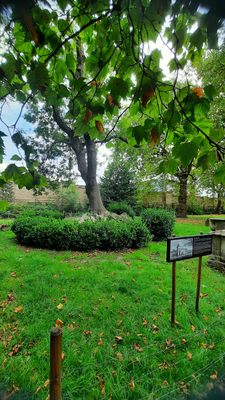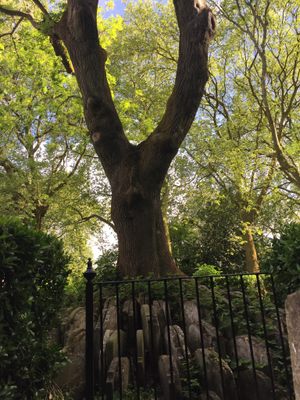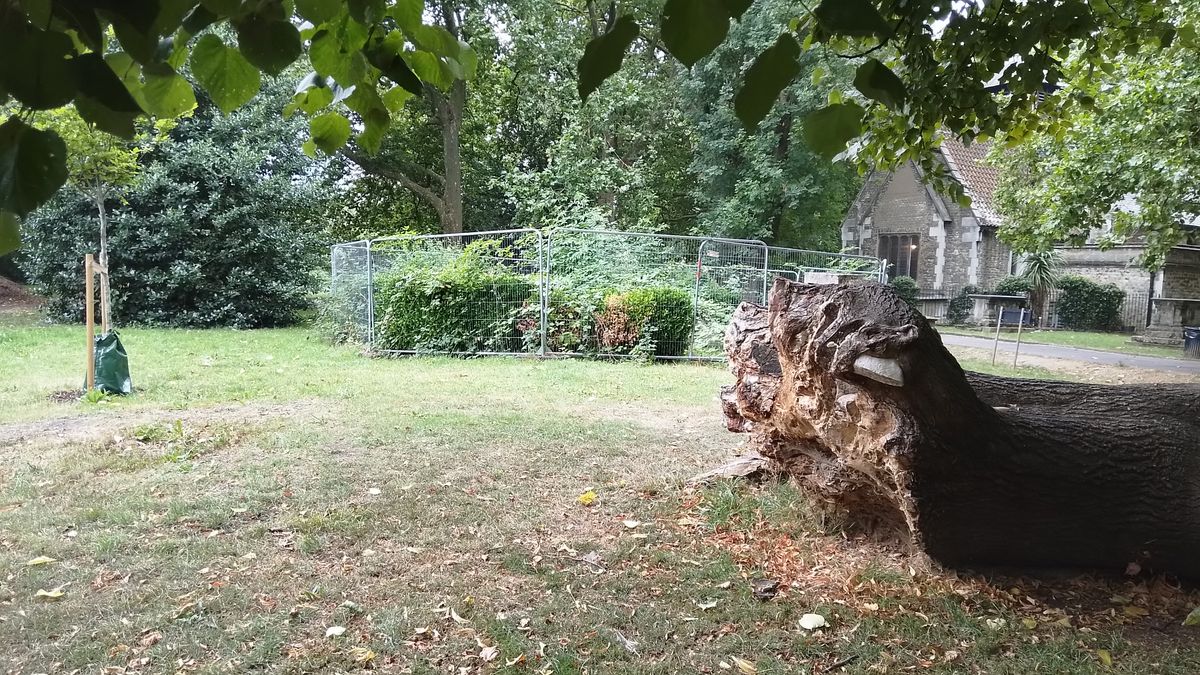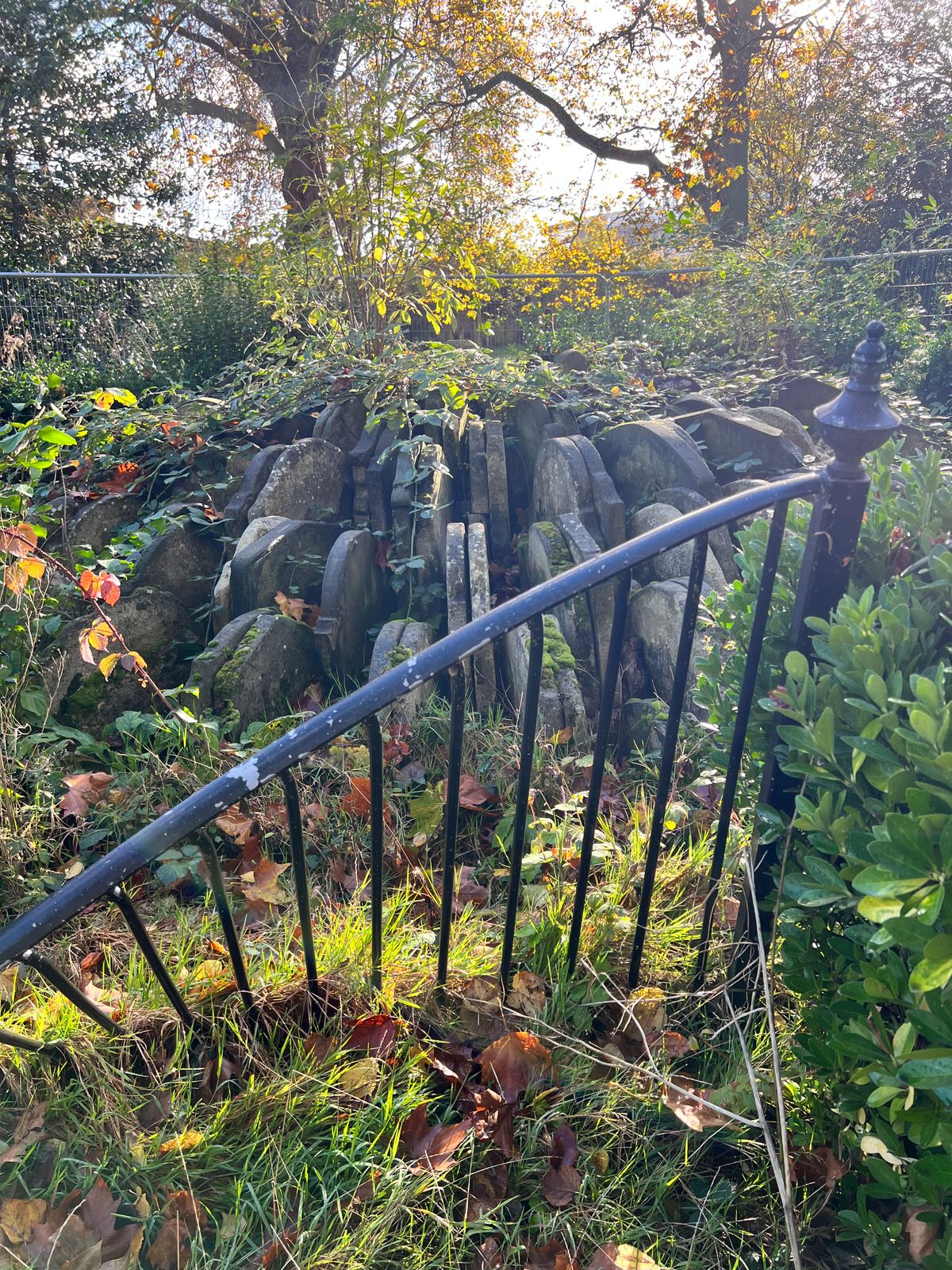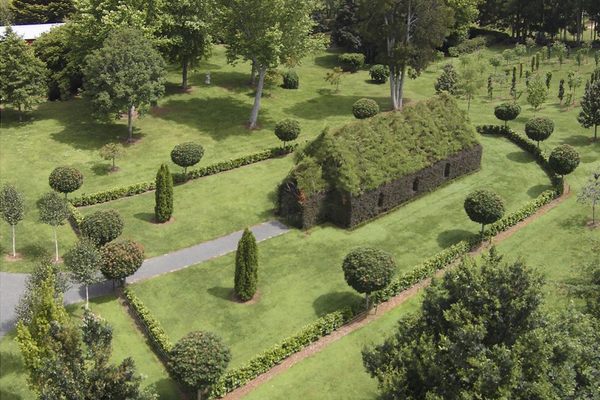About
Inside an ancient London churchyard, an ash tree is encircled with hundreds of overlapping gravestones placed there by classic novelist Thomas Hardy.
The cemetery alongside London’s St. Pancras Old Church, which is considered by many to be one of England’s oldest places of Christian worship, is the site of a number of fascinating stories—for one, Mary Shelley and Percy Bysshe Shelley planned their elopement there while visiting Mary’s mother’s grave. But perhaps one of its most striking oddities is the Hardy Tree, an ash tree surrounded by hundreds of weathered gravestones, layered practically on top of one another. How did they come to be arranged in this way?
In the mid-1860s, Britain’s rail system was experiencing immense growth, and London was outgrowing its existing lines. In order to accommodate the growing population of commuters, an expansion was planned—directly affecting the graveyard at St. Pancras.
In order to make way for the new train line, an architecture firm was contracted to perform the sensitive task of exhuming the remains and reburying them at another site. In the tradition of dumping rather unpleasant work on those lowest on the totem pole, the job was promptly assigned to their young employee, Thomas Hardy, who in the following decades would publish many classic novels such as Far from the Madding Crowd and Tess of the D’Urbervilles.
After the essential duty was completed, there remained hundreds of headstones, along with the question of what to do with them. Hardy’s solution was to place them in a circular pattern around an ash tree in the churchyard in a spot that would not be disturbed by the railway. One can only speculate as to how he arrived at this decision, but over the years the tree has absorbed many of the headstones, life and death melding into one image of grotesque and gothic beauty, preserved for centuries.
Sadly the tree has fallen victim to the same disease that killed the Lebanon Tree, Highgate Cemetery.
Related Tags
Know Before You Go
St. Pancras Gardens was also used as a photoshoot for The Beatles' "White Album" in 1968. Don McCullin photographed the musicians sitting on a bench that is located near The Burdett-Coutts Memorial Sundial.
Access to the tree is somewhat limited, as a chest height fence has been erected surrounding the entire circumference of the site. The tree and headstones are still visible, but getting into close proximity is curtailed. Just East of Mary Wollstonecraft's headstone lies the rather ornate tomb of Sir John Soane, proprietor of Soane's Museum. Purportedly, the design of Soane's grave was the inspiration for Sir Giles Gilbert Scot's model for the iconic red phone box. Giles' father was none other than George Gilbert Scott, the architect of the nearby St. Pancras International Hotel.
Community Contributors
Added By
Published
July 3, 2015












